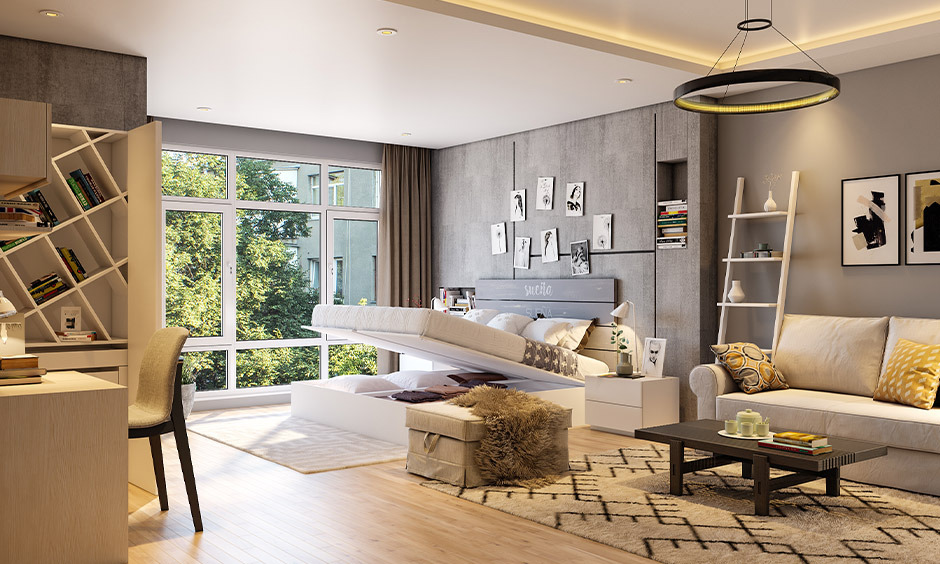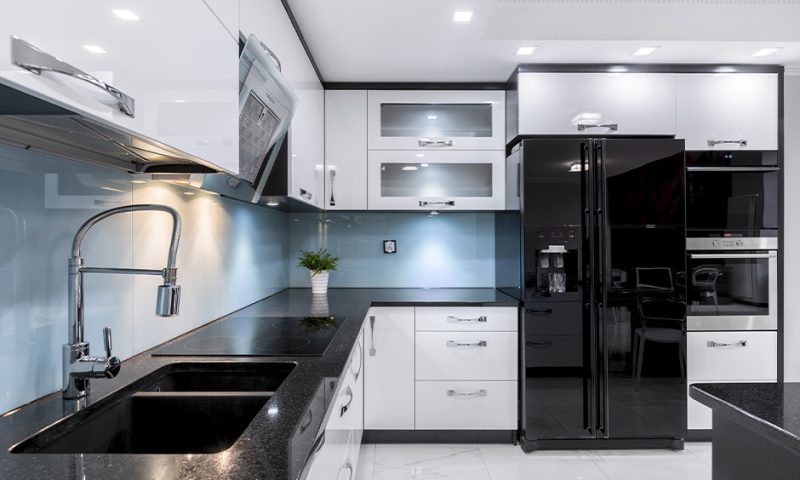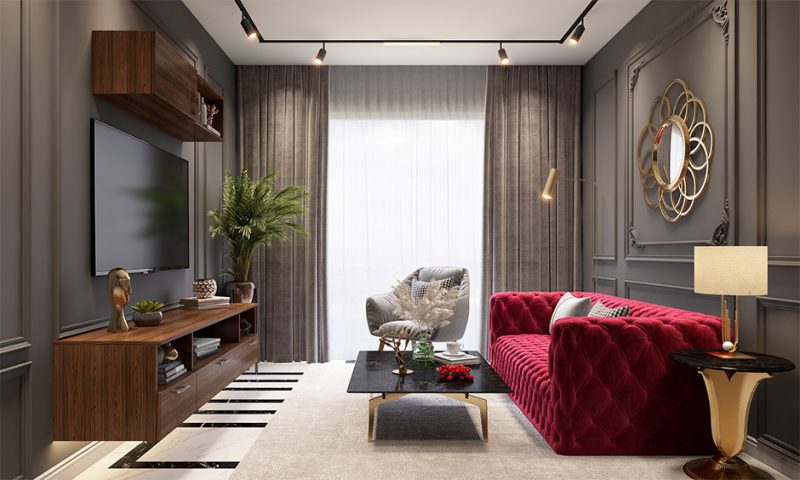Interior Design History: Journey of Design Through Time

Learn how interior designs aged like fine wine over time and inspired present-day trends.
The history of interior design is a tale of imagination, culture, and invention, from today’s sleek, practical rooms to the opulent, elaborate palaces of ancient civilisations. Every style is influenced by its era’s social, technological, and economic developments, whether the beauty of Victorian designs, the luxury of the Baroque era, or the simplicity of modern minimalism.
Knowing the past and seeing how people lived, what they valued, and how they represented themselves via their environment is similar to understanding the history of interior design. It’s incredible to consider that the need for greater family connection led to the open floor plans we adore today or that the vibrant colours and patterns of the 1970s were a response to social and political changes. Looking back, we can see a connection between the designs from different eras and the cultural shifts that influenced them.
History of Interior Design: Roots in Ancient Civilisation
The evolution of interior design goes back to ancient civilisation, where examples of interior decoration were visible in the homes of Egyptians, Romans, and Greeks. These communities laid the foundation for what we now call historical interior designs.
These civilisations frequently furnished their interiors with decorative materials like silks, stones, and valuable metals. They also included elaborate patterns and motifs, such as frescoes and mosaics, which still inspire interior designers today. For instance, the Egyptians were renowned for their sophisticated use of colour and motifs.
The Middle Ages to Renaissance: Evolution of Interior Design
The emphasis on defence and functionality in interior design shifted as the Middle Ages approached. Gothic interior design featured dark, ominous rooms with elaborate carvings, tapestries, and stained glass that exuded a sense of awe and spirituality.
This era was all about creating interiors that inspired awe. Classical concepts came back into vogue during the Renaissance when interest in humanism, art, and beauty grew. As the history of interior decorating shows, interiors became more symmetrical and elaborate, emphasising balance and harmony. Affluent households hired artists to design intricate furniture pieces, tapestries, and frescoes that blended form and function for their homes. The Renaissance laid the groundwork for interior designs through the ages, as practicality and aesthetics merged harmoniously.
History of Bohemian Interior Design
Bohemian interior design was born during the 19th century as a translation into space of artists, travellers, and other creatives who denied the bonds of conventional living. It constitutes a mix and match of colours, textures, patterns, and influences from different cultures and eras. It’s about expressing individuality, personalised by vintage furniture, artisan crafts, and earth tones.
History of bohemian interior design captures the perfect harmony between old furniture, artisanal crafts, and bold, earthy tones. The mix-and-match approach uniquely expresses personality, whether it is an object telling its story or every nook giving off that warm, creative sensation.
In the image, this Bohemian-inspired living room creates a vibrant and eclectic atmosphere. This room is characterised by a layered and textured approach, creating a visually appealing environment. A vintage armchair sits comfortably alongside the low-lying coffee table. The room’s overall atmosphere is relaxing, reflecting the free-spirited Bohemian vibe.
History of Scandinavian Interior Design
This style gave way to simplicity, functionality, and minimalism. Characterised by clean lines, natural materials, and a neutral colour palette, the Scandinavian design creates airy, light spaces that evoke calmness. Tied into this is the incorporation of wood, most notably in its lighter tones, such as birch and pine, while textiles give it warmth and texture. The nordic interior design style’s timeline is fascinating!
The image here reveals the key elements of Scandinavian interior design. Comfortable armchairs with wooden frames and upholstered cushions create a relaxing atmosphere, while round side tables with woven baskets add texture. The room is bathing in natural light, and many plants around the large windows add a natural touch to the surroundings. Neutral colours, clean lines, and a minimalist approach define the overall aesthetics.
Victorian Interior Design History
Victorian interior design, named after Queen Victoria, experienced unprecedented change during the Industrial Revolution. This period saw the mass production of decorative items, allowing previously exclusive goods to become accessible to the emerging middle class. Homes became a medium to showcase wealth and status, with interiors presenting the tastes and preferences of the homeowners. The newfound prosperity gave rise to eclecticism, adapted from the Gothic, Renaissance, and Rococo styles.
This interior design inspires designers even today, motivating them to infuse richness, detail, and eclecticism in their projects. Modern-day styles often reflect the various interior design era timelines through different features. For Victorian-inspired homes, grand staircases, ornate wood panelling, and decorated fireplaces rule the roost!
The love for luxury and beauty to create a space with character and historical depth also finds expression in wall sconces, chandeliers, and bold colours. Whether using vintage furniture, ornate detailing, or rich colours, the Victorian influence in interior design is still visible.
Observe how the image captures the grandeur of the Victorian era in this beautiful living room. The room exudes grandeur and sophistication. Its centrepiece is a grand sofa with upholstery and matching armchairs. A luxurious patterned rug covers the floor. The overall atmosphere of the room reflects obvious sophistication, reminiscent of the Victorian era.
Also, check out Modern Adaptations Of Victorian Living Room Ideas
Japanese Interior Design History
Japanese interior design harmoniously combines simplicity with nature, blending with Japan’s cultural and historical context. Centuries of tradition reflect the aesthetic of this design by using the principles of Zen Buddhism, traditional architecture, and instinctive love for the natural world. This interior design philosophy, developed over centuries, reflects peace and balance that inspire and resonate worldwide.
Great respect for nature is the basis of the evolution of interior design in Japan. The core of the philosophy of wabi-sabi, finding beauty in imperfection, is central to this approach. Natural elements like wood, bamboo, stone, and plants are combined to develop spaces that feel alive and connected to the natural environment. Large windows or sliding doors opening into gardens create a bright interior, as found commonly in Japanese homes, and provide easy passage between indoors and outdoors.
Notice the details in the image. The space is adorned with natural elements, including wooden work on the ceiling and potted plants. A small dining table in the centre surrounded by colourful chairs offers a comfortable sitting area to enjoy breakfast. The overall vibe of this balcony reflects the Japanese principle of minimalism.
Contemporary Interior Design: History Repeats Itself
Significant changes in interior design occurred during the 20th century, primarily due to industrialisation and shifting social dynamics. Mass production and new materials brought about by the Industrial Revolution changed how people thought about interior design. The elaborate and bulky furniture of the past gave way to more straightforward, comfortable, and efficient furnishings in the modern period.
This period in the history of interior decorating prioritised practicality, and designs became more widely available and reasonably priced. Clean lines and open layouts were used in the design of furniture and interiors, reflecting the emphasis on efficiency and a simplified way of life at the time.
The idea of open-plan living started to take shape in the second half of this century, promoting a sense of space and light. The use of colours also changed, and neutral colours became famous for their versatility and ability to create a calm environment.
A growing trend in interior design history was the blending of several styles and historical periods, which resulted in eclectic spaces that showcased individual preferences rather than rigid devotion to a particular style. This move toward customised and practical environments set the stage for modern looks, emphasising comfort, originality, and adaptability.
Also, check out Contemporary Interior Design Ideas to Transform Your Home
Modern Trends & More: Futuristic Evolution of Interior Design
Interior design today is more varied than ever. A growing awareness of sustainability and advanced technology has emphasised eco-friendly and efficient homes.
Since time immemorial, the evolution of interior design has responded to changing needs, and this responsiveness is critical in an ever-evolving world.
Similarly, multi-purpose flexible rooms reflect the modern way of living that demands a house used for everything from business to leisure. This personalisation and adaptation trend indicates how interior design continues to change, merging innovation and tradition for today’s needs. The future holds a lot of promise!
The history of interior design is an exciting combination of cultural, technological, and artistic influences. It has grown with the passing years, with new influences and ideas constantly woven. Yet, the core remains the same: create spaces that define who we are and how we live.
Frequently Asked Questions:
1. What are the key characteristics of ancient interior design?
Ancient interior design includes simplicity, functionality and symbolism. The essential elements of ancient interior design include symbolism, utility, and simplicity. Interior design in ancient Egypt included simple furnishings, fabrics, and ornamental artwork that frequently represented social status and had religious significance.
Interior design in Greece and Rome strongly emphasised symmetry, proportion, and fusing beauty with functionality. They created aesthetically pleasing and valuable living environments using wood, stone, and mosaics.
2. How did ancient civilisations influence modern interior design?
Ancient civilisation has influenced modern interior design by providing founding principles and aesthetics that inspire today. For example, the Greeks introduced the concepts of symmetry and proportion, which are still the highlights of modern interior designs.
The Romans valued open layouts and the use of natural light, which are characteristic of modern interior design. Due to its classic appeal, modern decor frequently incorporates Egyptian motifs and patterns.
3. How has interior design evolved over different historical periods?
Over time, interior design has changed dramatically. Ancient civilisations emphasised status and functionality with complex patterns. During the medieval period, the emphasis shifted to durability and hierarchical aesthetics, with hefty, sophisticated furniture. The Baroque period, which favoured dramatic and lavish designs, came after the Renaissance, which introduced classical forms and grandeur. From Victorian to Rococo, various eclectic styles were popular in the 18th and 19th centuries.







